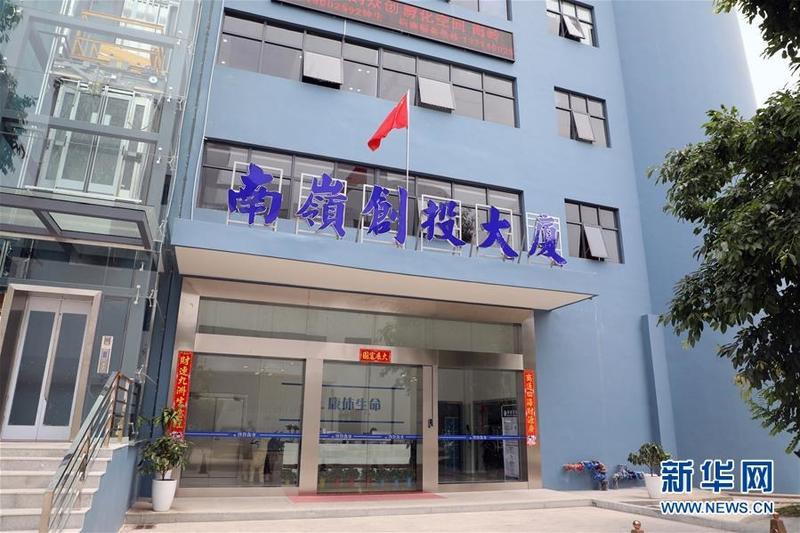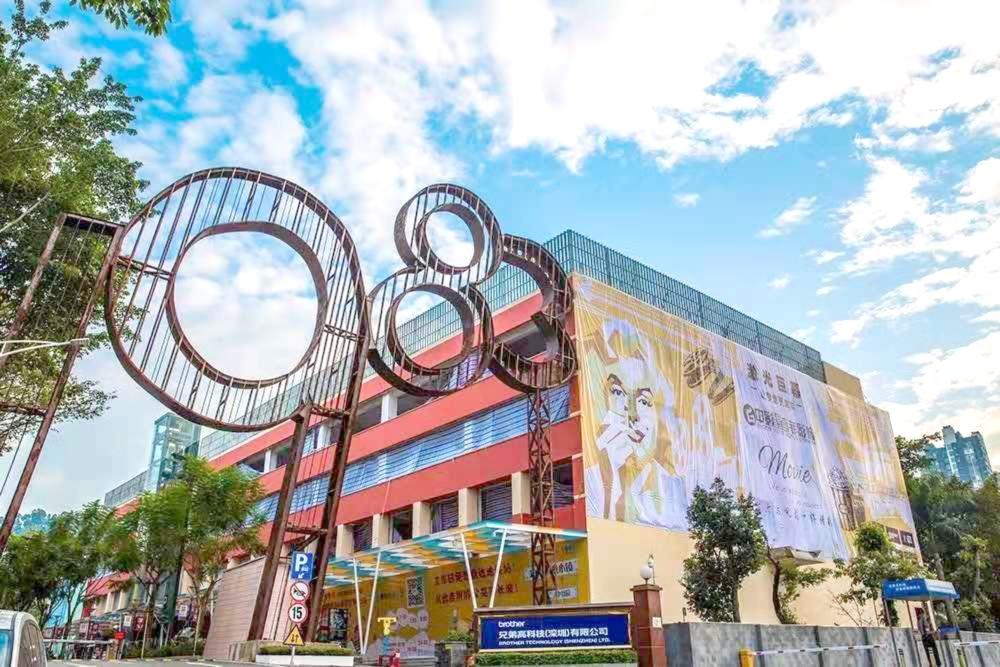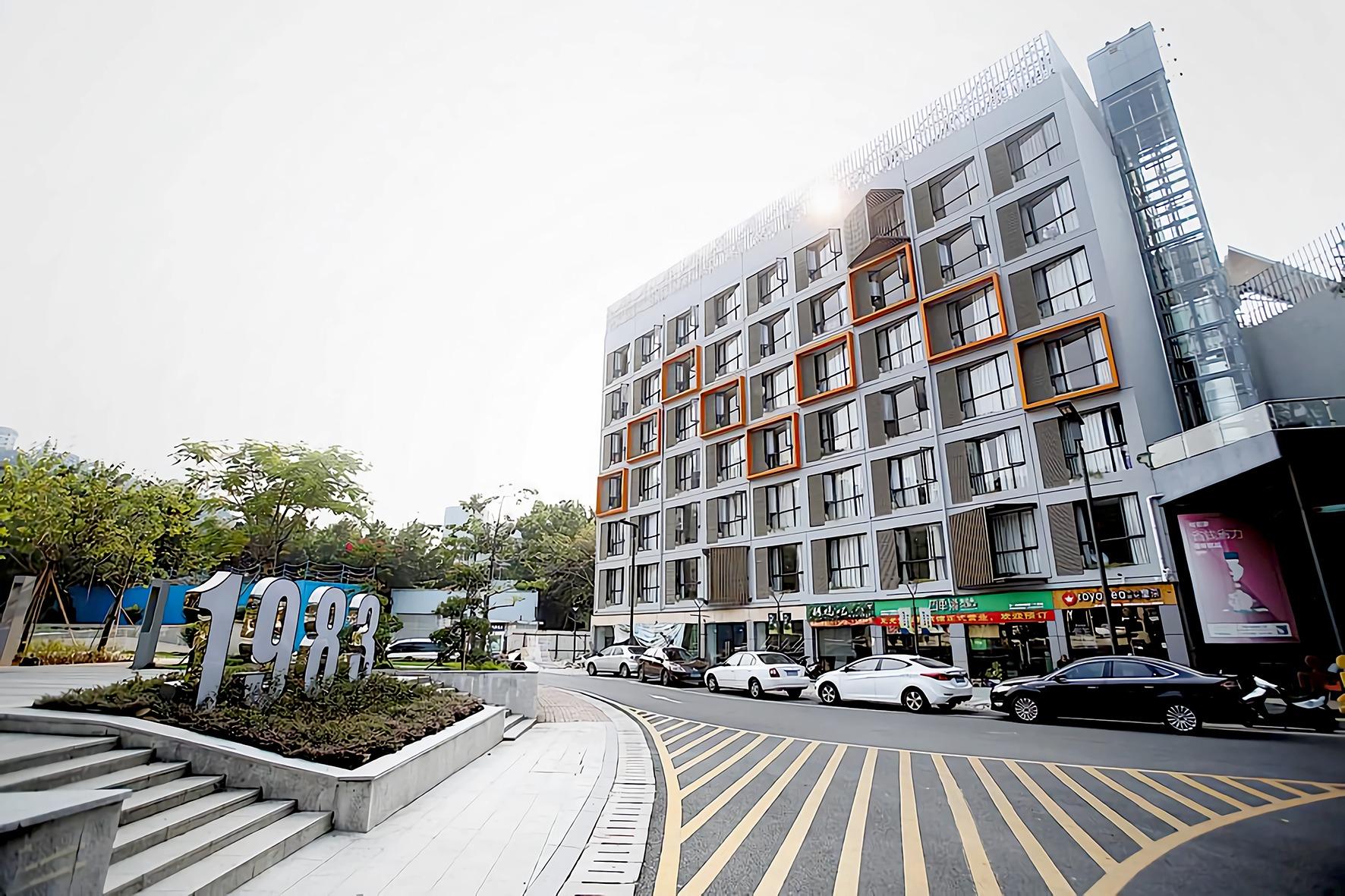Shenzhen’s urban villages are seizing the ‘historic opportunity’ to invest in innovative startups to reap profits from high-quality development. Zhou Mo reports from Shenzhen.
 A panoramic view of Nanling village in Longgang district, Shenzhen. To achieve sustainable growth, the urban village is diversifying its development path by investing collective capital in innovative enterprises, instead of relying solely on leasing property. (PHOTO / XINHUA)
A panoramic view of Nanling village in Longgang district, Shenzhen. To achieve sustainable growth, the urban village is diversifying its development path by investing collective capital in innovative enterprises, instead of relying solely on leasing property. (PHOTO / XINHUA)
When Zhang Yubiao took the unprecedented step of making his fellow villagers shareholders of an innovative startup in 2018, he had no idea what the future would hold, but he was confident it was a move in the right direction.
Nanling village, which Zhang heads, in Shenzhen’s Longgang district, is one of Shenzhen’s more than 1,000 urban villages and is among the first in China to embrace venture capital. With collective rural capital, the village has invested in a dozen innovative enterprises via a fund management company it controls. Its investment in the projects, covering high-tech areas like biomedicine, advanced manufacturing, artificial intelligence, new energy and electronic information, ranged from a few million yuan to tens of millions of yuan.
“We don’t want to stick to the old path of relying on property leasing to create income. We hope to explore new ways of achieving high-quality development,” Zhang says. “Riding on the wave of technological innovation is a historic opportunity we can’t afford to miss.”
Shenzhen’s rapid urbanization in the past 40-plus years since its rise from a small fishing village to a major commercial metropolis has seen the emergence of many urban villages whose residents have relied on collective land to make a living.
 A fund management building in the village. (PHOTO / XINHUA)
A fund management building in the village. (PHOTO / XINHUA)
As the rural economy seeks more sustainable growth amid a property cooldown, an increasing number of urban villages are following in Zhang’s footsteps, jumping on the bandwagon of technological advancement and becoming a new source of venture capital.
The trend has accelerated as the venture capital industry finds it hard to raise funds because of the economic slowdown, the COVID-19 pandemic, and geopolitical tensions, all of which have dampened investment sentiment.
According to a report by Zero2IPO Research — a Beijing-based research firm that tracks the Chinese mainland’s venture capital market — up to 1,601 funds had completed a new round of raising capital in the first quarter of this year — down 7.6 percent from the same period a year earlier. The 353.2 billion yuan ($48.77 billion) raised in the first three months of 2023 represented a 33 percent year-on-year decline.
China’s venture capital funds hit 14 trillion yuan by the end of last year — the second-largest in the world, accounting for nearly 70 percent of the country’s privately offered funds — according to He Yanchun, president of the Asset Management Association of China, a self-regulatory organization representing the mutual fund industry.
“But due to a number of unexpected factors, including the COVID-19 pandemic and the changing internal and external situations, (the level of) complexity, severity and uncertainty in the country’s economic environment is on the rise,” he told a venture capital investment conference in Wenzhou, Zhejiang province, in May.
“Against the backdrop, the venture capital industry is facing temporary setbacks — difficulties in raising funds, heavy pressure on post-investment management, and unstable exit expectations.”
 Nanling village’s “culture and creative town”, which was renovated from old manufacturing sites in a bid to upgrade the urban village’s development mode, is an integrative complex with tourist attractions, recreation venues and space for working and education that meets villagers’ various needs. (PHOTO PROVIDED TO CHINA DAILY)
Nanling village’s “culture and creative town”, which was renovated from old manufacturing sites in a bid to upgrade the urban village’s development mode, is an integrative complex with tourist attractions, recreation venues and space for working and education that meets villagers’ various needs. (PHOTO PROVIDED TO CHINA DAILY)
Win-win outcome
The marriage of the rural economy and venture capital could create a win-win outcome, says Chen Jianhua, an expert on rural collective economies who offers consulting services for cooperative stock companies in Shenzhen.
“As the mainland’s property sector goes through a tough period amid the economic slowdown and government restrictions, urban villages that have been relying on property leasing for years now have to seek fresh avenues to maintain and expand their fortunes. Venture capital investment is a new way for them to transform and achieve high-quality development,” he says.
“Meanwhile, the influx of capital from urban villages is a boon for venture capital, injecting fresh blood into the industry and promoting technological innovation.”
Shenzhen started rural urbanization in its special economic zones in 1992, with collective economic organizations being turned into enterprises known as cooperative stock companies. The companies are established on the basis of collective assets owned by urban villages, with the villagers themselves as shareholders.
According to the 2021 statistics of Shenzhen’s State-owned Assets Supervision and Management Commission, the city was home to about 1,000 such companies, with nearly 250 billion yuan in total assets.
 Nanling village’s “culture and creative town”, which was renovated from old manufacturing sites in a bid to upgrade the urban village’s development mode, is an integrative complex with tourist attractions, recreation venues and space for working and education that meets villagers’ various needs. (PHOTO PROVIDED TO CHINA DAILY)
Nanling village’s “culture and creative town”, which was renovated from old manufacturing sites in a bid to upgrade the urban village’s development mode, is an integrative complex with tourist attractions, recreation venues and space for working and education that meets villagers’ various needs. (PHOTO PROVIDED TO CHINA DAILY)
Income generated from urban renewal and property leasing in the villages will go to the companies. Owning properties of more than 100 million square meters, Shenzhen’s urban villages generated 22 billion yuan in revenue and nearly 10 billion yuan in profit a year, the commission said.
The income has long been deposited in banks to earn interest and ensure that stable dividends can be distributed to villagers annually. According to the commission, Shenzhen’s urban villages had more than 80 billion yuan in bank deposits in the third quarter of 2021.
In a document issued by Shenzhen’s industry and information technology bureau in February, to alleviate the burden of small and medium-sized enterprises and promote their development, the government said it will strengthen its support for high-quality SMEs in raising money by attracting capital from cooperative stock companies to enter the venture capital market.
Zhang Qixin, chairman of the company owned by Hubei village in Shenzhen’s Luohu district, said there has been a consensus in the company that the annual bonus of shareholders has to keep growing or remain stable. “Once it’s reduced, it has to be explained to the villagers.” He said the company had tried to make some investments, but received little support from the villagers because of the potential risks.
Zhang Yubiao admits he encountered skepticism from Nanling villagers not long after making their investments. “They asked why they had not seen any financial return yet, as they had been expecting quick yields. And you have to let them know it’s a long-term investment that could end up with success or failure.”
 An old photo shows Nanling village decades ago. Once among Shenzhen’s poorest areas, the village witnessed a pharmaceutical firm it had invested in listed on the Shanghai Stock Exchange in 2022. (PHOTO PROVIDED TO CHINA DAILY)
An old photo shows Nanling village decades ago. Once among Shenzhen’s poorest areas, the village witnessed a pharmaceutical firm it had invested in listed on the Shanghai Stock Exchange in 2022. (PHOTO PROVIDED TO CHINA DAILY)
‘Long and thorny path’
Nanling village reached a milestone last year as Hinova Pharma — a pharmaceutical firm it invested in — was listed on the Nasdaq-style STAR Market of the Shanghai Stock Exchange.
“Unlike previous years, leaders of Shenzhen’s urban villages are now from the younger generations born in the 1970s or 1980s, and who have certain knowledge about stocks, venture capital and other financial matters. When property can no longer support their assets’ sustainable growth, they have to think of other ways to make their collective capital produce good results. As a city known for its innovation and entrepreneurship, Shenzhen provides a fertile ground for them to experiment in this field,” Zhang Yubiao says.
Despite the growing number of urban villages investing in the venture capital industry, those willing to take the plunge still account for only a small proportion of them. Besides Nanling village, Shangsha village in Futian district currently operates four incubators through its cooperative stock company. Shangsha village has also invested in more than 10 projects, including several in the venture capital field, according to local media reports.
“About 20 to 30 cooperative stock companies in Shenzhen have taken the bold step to venture into the highly risky field and become angel investors so far,” Chen says, referring to entities that financially back startups in exchange for a piece of the business. “Another 50 to 60 are interested in participating, but are still adopting a wait-and-see attitude for various reasons, such as the lack of a professional investment team, differences in opinions in the companies’ leadership, and difficulties in identifying a project they consider worth investing.
“Venture capital comes with high returns, along with high risks. It’s important for villagers to be fully prepared for losses economically and psychologically,” Chen says
A sound mechanism has yet to be set up to lay a solid foundation for the business, as there is still a lack of regulations and guidelines on how to deal with potential losses and assess liability, he says.
To reduce risks, some urban villages are collaborating with State-owned venture capital firms to become limited partners as the first step. Limited partners still have to bear the liability, but it cannot exceed the amount they have invested in the business.
Earlier this year, 11 villages in Luohu district teamed up with SZHTI Group — a State-owned company that provides asset management and financing services — in jointly setting up a 170-million-yuan private equity fund, with rural collective capital exceeding 100 million yuan.
According to Xu Zaokun, general manager of SZHTI, the company has a highly developed system and procedure for managing risks. “Rather than pursuing highly risky returns, we focus on the growth value of invested enterprises and make investments within a reasonable and manageable range,” he says.
The government is also providing support to help hedge risks. The Luohu district government said it will offer up to 1 million yuan in subsidies a year for cooperative stock companies that have invested in venture capital funds established or managed by city-owned enterprises for more than a year. The financial support will last up to five years. In the exit stage, risk compensation capped at 3 million yuan will be granted to them if they do incur losses.
“It will be a long and thorny path, but an inevitable one for Shenzhen’s urban villages to go into wealth management and investment. Although it’s just the beginning for them, it’s a significant move. There will definitely be hurdles, but they will grow and become stronger,” Chen says.
Contact the writer at sally@chinadailyhk.com



